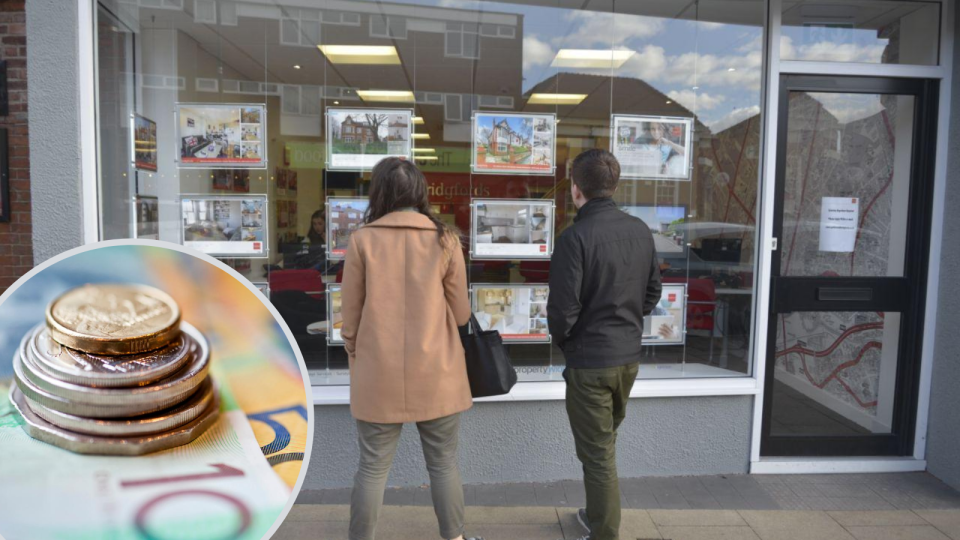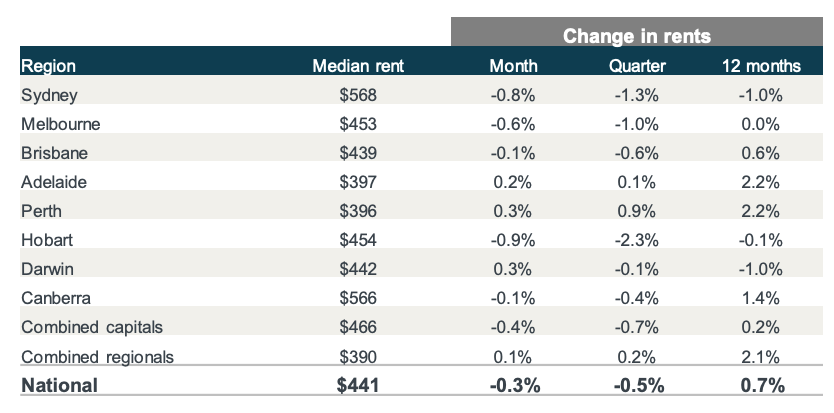Rent prices fall in 6 capital cities: Are you paying too much?

Renters in Sydney, Melbourne, Brisbane, Hobart, Darwin and Canberra are paying less for their bills compared to three months ago as Covid-19 makes its dent on the rental market, new data has revealed.
According to fresh CoreLogic figures, the median rent in Sydney fell to $568 over the June quarter, down from $574 in the March quarter. Melbourne renters are paying $5 less, with rents from $458 to $453.
Brisbanites, Darwinians, and Canberrans have also been paying slightly less for rent over the last three months.
But Hobart, once Australia’s property darling, saw the greatest fall of all, with median rent falling from $470 to $454.
During the month of June, rent prices fell by 0.3 per cent across the nation and 0.5 per cent over the quarter – a drop that hasn’t been seen since September 2018.

Capital cities saw a greater fall in rent prices than regional cities: capital city rents fell by 0.7 per cent across the June quarter, whereas rents in regional Australia actually rose by 0.2 per cent.
Covid-19 pandemic brings down rent prices
According to CoreLogic head of research Eliza Owen, rental rates have copped a beating from the reduction in migrants and the magnitude of job losses.
Prior to the June quarter, momentum had actually been building behind rent growth due to less investor activity and fewer new rentals, Owen said. Tighter lending conditions in 2018 also saw rent prices tick up.
“However, the COVID-19 environment shifted this trajectory. Closed international borders created a significant shock to rental demand, as historically the majority of new migrants to Australia have been renters,” Owen said.
“Furthermore, job losses in sectors such as hospitality, tourism and the arts, which ABS payroll data estimates has been around 20 per cent, have also impacted demand, because households in these sectors are more likely to rent than in other industries.”
Win for big city dwellers: Rent to keep falling
The varied differences in rent prices demonstrate the varied degrees of lockdown across the different capital cities.
Owen told Yahoo Finance she expected property prices to continue sliding, especially in Australia’s biggest cities.
“Sydney and Melbourne are the most likely to see rents continue to fall for the rest of the year. The decline in rents has been exacerbated in these markets, where there has historically been a high exposure to rental demand in particular from net overseas migration,” she said.
For instance, overseas migration saw demand for roughly 6,900 additional rental properties in Melbourne’s inner region across 2019. “So the lack of overseas arrivals is having an enormous demand shock on these markets in particular. It’s a similar story for markets like inner-city Sydney and Parramatta,” said Owen.
The second lockdown in Melbourne also means more income job losses across the food, accommodation, arts and recreation services sectors – and this may create a “particularly sharp decline” in Melbourne rent prices over the next few months, she added.
“For some of these markets, particularly desirable, inner-city markets the fall in rent values may draw in demand from suburbs further from the city centre. This means the decline in rent values may become more broad based, as the fall in demand ‘ripples out’ across Sydney and Melbourne.”
Meanwhile, the fall in Brisbane and Hobart rents will ease up as inter-state travel picks up.
“The inability of Australians to travel overseas is likely to see a flourish of domestic tourism, renewed demand for Airbnb stays, and thus a tightening in the long term rental market.”
Hobart hit hardest
Of all capital cities, Hobart has seen the greatest drop in rent prices.
“This was the most severe quarterly decline in rent values for the capital city since September 2012, when rents declined 2.4 per cent off the back of weak economic growth and a spike in unemployment,” said Owen.
Hobart’s workforce comprises of more workers from the accommodation, food, arts and recreation services sector than other capital cities, so higher rates of job losses likely contributed to lower rent prices.
The city’s high volume of Airbnbs also saw many of these properties converted to long-term rentals.
If you’re paying too much in rent, you’re within your rights to negotiate the rate down.
However, rental prices will vary according to your local property market, so do your research about the average rental rate in your suburb and prepare a good justification for asking for a lower rate before speaking to your landlord.
And even if your landlord refuses to bring the rate down, there are still some steps you can take – and rest assured you can’t be evicted without a Notice to Vacate from your state’s Tribunal. Your landlord isn’t able to personally evict you.
Make your money work with Yahoo Finance’s daily newsletter. Sign up here and stay on top of the latest personal finance, economy, property and career news.
Follow Yahoo Finance Australia on Facebook, Twitter, Instagram and LinkedIn.


